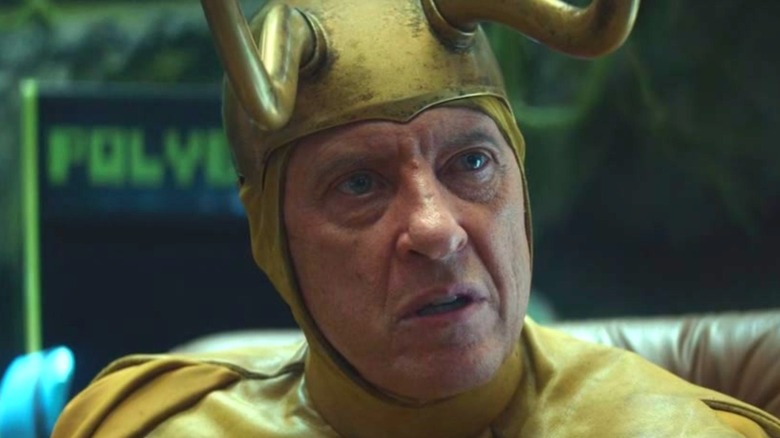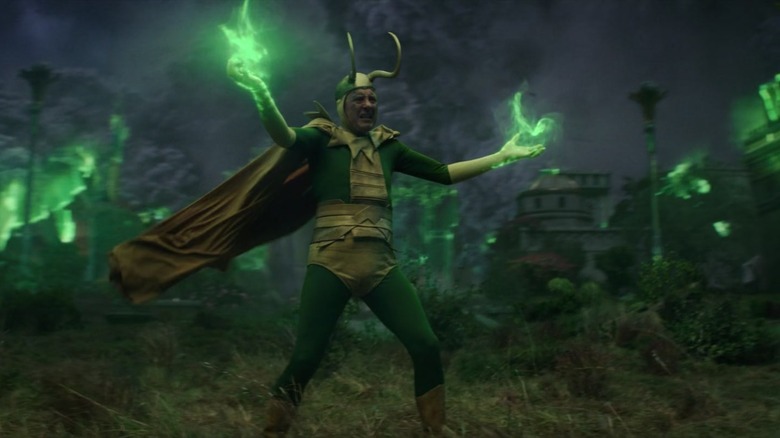The Story Behind Marvel's Classic Loki
The Disney+ series "Loki" has taken the MCU's most beloved anti-hero and expanded the character outwards in a way similar to that seen in "Spider-Man: Into the Spider-Verse." Just like in that expectation-defying film, fans have now seen multiple variations of the Trickster God, many inspired by classic comic arcs and others the product of the show's creation.
Besides the fact that Loki (Tom Hiddleston) himself is technically a variant, viewers got their first taste of a multi-Loki storyline when they finally met Sylvie (Sophia Di Martino) in Episode 3. The show then hinted at just how expansive the world of Loki might be with a post-credit scene teaser at the ending of Episode 4 before diving into the possibilities of a Loki-centric world in "Journey into Mystery." In that episode, Hiddleston plays more than one Loki, appearing also as President Loki, while fans are introduced to Kid Loki (Jack Veal), Boastful Loki (DeObia Oparei), and Alligator Loki.
However, none of the Lokis that inhabit the Void are quite as emotionally impactful as Classic Loki (Richard E. Grant), a somewhat sorrowful but ultimately heroic variant who demonstrates the best of elements of Loki. While Classic Loki may borrow some aesthetics from previous comic book versions of the anti-hero, he was ultimately very much a creation of the series. Here is the story behind the MCU's Classic Loki.
Classic Loki was the result of a 'thought experiment'
As Classic Loki travels with Loki, he explains his aged appearance and why he ended up in the Void. He managed to evade death at the hands of Thanos thanks to the use of projection magic, but then instead of returning to cause more chaos, he opted to find a faraway planet to continue existence quietly. However, an overwhelming desire to once again see his brother Thor prompted him to leave his new home, which landed him in trouble with the Time Variance Authority.
"Loki" head writer Michael Waldron told Marvel.com that the backstory for Classic Loki came from a "thought experiment" on how Loki could both survive what happens to him in "Avengers: Endgame" and avoid the gaze of the TVA. Ultimately, Waldron said, "It was that tragic thing where he finally realizes 'I'm meant to be alone.'"
Underneath all that, Waldron explains that there's "a real lesson there for our Loki in that he's going to reject that notion– that this tiger can change his stripes, and he refuses to be alone." Loki's search for genuine companionship and occasional impulse to do the right thing may ultimately conflict, and Classic Loki's sacrifice may be indicative of the changes he may have to make to find a way out of the TVA's influence.

